
Ethiopian Calendar and Gregorian Calendar
Everything You Need to Know About the Ethiopian Calendar
1. Maskerem 2014/Tikimt 2014
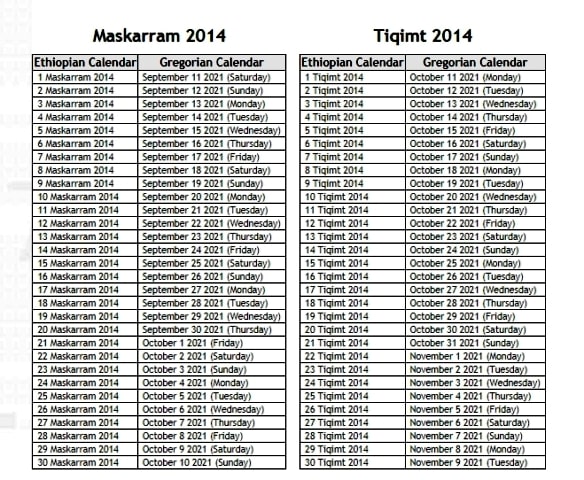
2. Hidar 2014
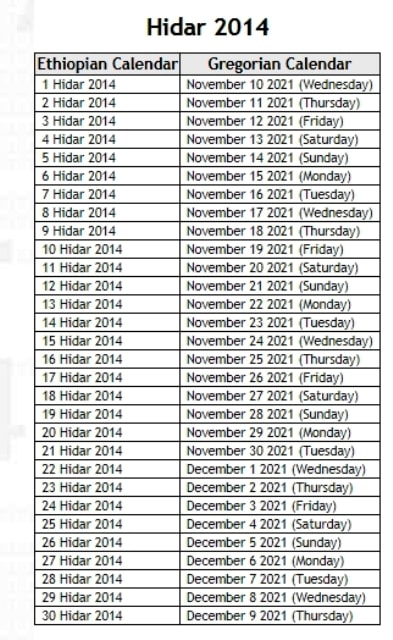
3. Tahsas 2014
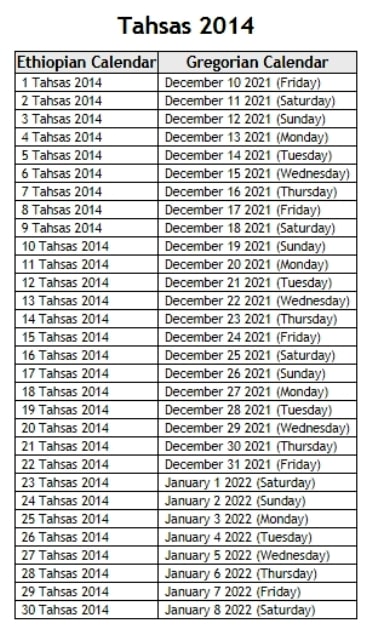
4. Tirr 2014
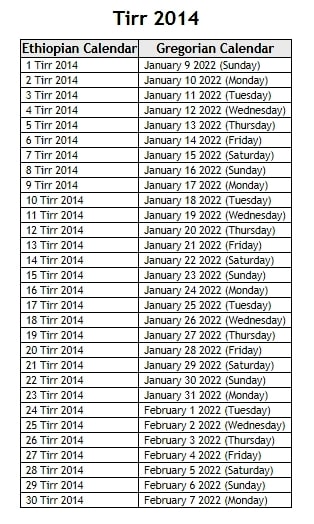
5. Yekatit 2014/Megabit 2014

6. Meaza 2014/Ginbot 2014

7. Sene 2014/Hamle 2014
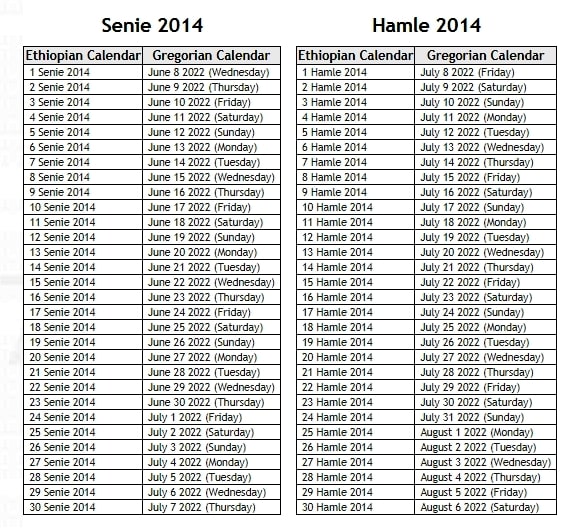
8. Nehase 2014/Puagme 2014
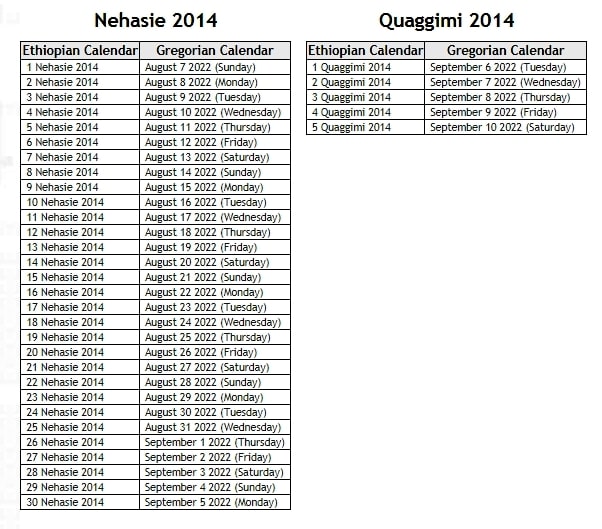
| Ethiopian Month | Gregorian Month | Dates Equal to Gregorian Calendar |
|---|---|---|
| Meskerem | 1st Month/1st Day in Ethiopia is September 11 - October 10 (Year Begins Sept. 12/leap years) | 9th Month in Gregorian |
| Tikimt | 2nd Month in Ethiopia is October 11 - November 9 | 10th Month in Gregorian |
| Hidar | 3rd Month in Ethiopia is November 10 - December 9 | 11th Month in Gregorian |
| Tahsas | 4th Month in Ethiopia is December 10 - January 8 | 12th Month in Gregorian |
| Tir | 5th Month in Ethiopia is January 9 - February 7 | 1st Month in Gregorian |
| Yekatit | 6th Month in Ethiopia is February 8 - March 9 | 2nd Month in Gregorian |
| Megabit | 7th Month in Ethiopia is March 10 - April 8 | 3rd Month in Gregorian |
| Meyazya | 8th Month in Ethiopia is April 9 - May 8 | 4th Month in Gregorian |
| Ginbot | 9th Month in Ethiopia is May 9 - June 7 | 5th Month in Gregorian |
| Sene | 10th Month in Ethiopia is June 8 - July 7 | 6th Month in Gregorian |
| Hamle | 11th Month in Ethiopia is July 8 - August 6 | 7th Month in Gregorian |
| Nehase | 12th Month in Ethiopia is August 7 - September 5 | 8th Month in Gregorian |
| Puagme | 13th Month in Ethiopia is September 6 - September 10 (Year Ends Sept. 11/leap years) | - |
Ever since the year 1582, the western or Gregorian calendar has inevitably become the cultural, religious, and civil calendar for most of the world's inhabitants.
Due to ideological differences, the Eastern Orthodox Church and the Ethiopian Orthodox Tewahedo Church did not go along with the changes made by the Gregorian calendar but instead continued to us the Julian calendar which utilizes lunar tables for calculating Easter and other holidays.
The Julian, Gregorian, Coptic and Ethiopian calendars have the same number of days in a year, (365 days and 366 days in a leap year), but the counting methods giving the number of days in each month, and number of months in a year, of the Julian and Gregorian calendars vary from the Ethiopian and Egyptian Coptic calendars.
The Ethiopian and Coptic calendars consist of thirteen months where the first twelve months have thirty days each, and the last (thirteenth) month has only five days (six days in a leap year).
The Gregorian calendar consists of twelve months with January, March, May, July, August, October and December having thirty one days, April, June, September and November, thirty days and February having twenty eight days (twenty nine days in a leap year).
The Ethiopian New Year falls on September 11 (September 12 in the leap year) in the Gregorian calendar but it is September 1 in the Ethiopian calendar.
In Ethiopia the first month of the year is September and the last (thirteenth) month of the year is Puagme, which comes after August.
Each month has thirty days (from September to August) and the thirteenth month, Puagme, has only five days (6 days in a leap year).
